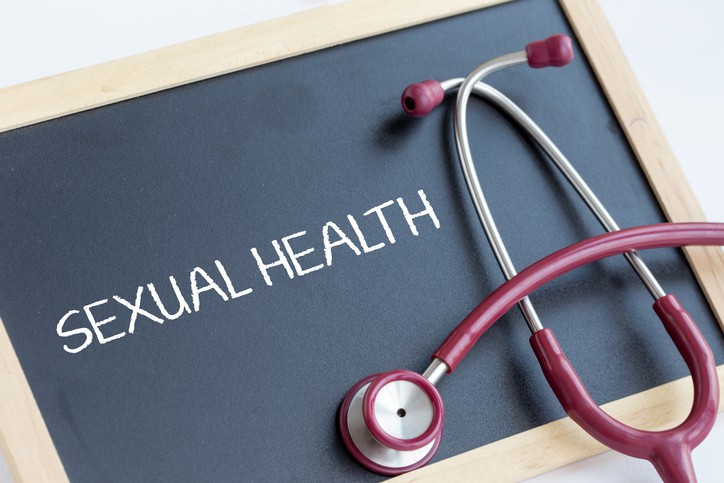Increase In Sexually Transmitted Diseases As World Focus Still On Covid 19
Nikki Attkisson | Last Updated : April 28, 2021New data released by the American Centre for Disease Control and Prevention (CDC) show that cases of sexually transmitted Diseases (STD) have been gradually increasing for six years in a row, peaking in 2019.
Increase In Sexually Transmitted Diseases As World Focus Still On Covid 19
The 2019 surveillance report found 2.5 million cases of Gonorrhea, Chlamydia, and Syphilis which are the three most common sexually transmitted diseases. The report found a 30% increase in sexually Transmitted diseases from 2015 upto 2019. The report specifically mentioned a fourfold increase in cases of congenital Syphilis among newborns.

Raoul Domaguera is the acting director of the CDC’s Division of STD prevention. On the subject of the increase in STD, he said that less than twenty years ago, Gonorrhea and syphilis cases were so low they were virtually eliminated. He admitted that STD defenses were down and that they must prioritize and focus efforts to regain lost ground and control the spread of STDs.
Preliminary surveys conducted in 2020 showed the continuing increasing trend of STDs. A worrying trend is that research and treatment since then have taken a lower priority as with other diseases after the Covid 19 pandemic began.
The health consequences of sexually transmitted diseases can be quite serious. Though infected people do not display visible symptoms, no treatment over long periods can lead to an increased risk of HIV infection. In addition, long periods of STD infection without treatment can also lead to chronic pelvic pain, inflammation, infertility, pregnancy, and pediatric complications and can cause higher infant mortality.
The 2019 study of STDs found that these disease rates were more in ethnic Race groups. The report found African Americans were 5-8 times, American Indians 3-5 times, and Latin Hispanics 1-2 times more than non-Hispanic Whites. The report also found that Gay and Bisexual men comprised half of all the cases of Syphilis and that Gonohrrea cases in these men were 42 times more than normal heterosexual males.
Reacting to this community wise data, Jo Valentine, Associate Director of the Office of Health Equity in the CDC’s Division of STD prevention said focussing on Hard-hit populations is critical to reducing disparities. She added that the social and economic conditions that make it difficult for some groups to stay healthy are to be addressed. These include poverty, unstable housing, drug abuse, lack of medical insurance and medical providers in these communities.
Studies have shown that there has been a gradual reduction in screening, treatment, and prevention for STDs over the years that gradually led to an increase in the number of Cases. The situation further deteriorated after the Covid 19 pandemic began in late 2019 and most health care workers were moved to Covid 19 Treatment.
A survey done in January 2021 revealed that 33% of all the staff dedicated to STDs were still deployed to assist with Covid 19. A recent report on sexually transmitted infections by the National Academy of Sciences, Engineering, and Medicine, noted that the Covid 19 pandemic has exposed weaknesses in public health preparedness. The exposed weaknesses were due to weak infrastructure, an under-capacitated and under-resourced workforce, and a weak surge force.
The CDC has taken cognizance of the need to address the surge in STDs and has identified several ways in which STD services can reach out to the people. These include STD express Clinics which provide walk-in testing and treatment without a full team. Another identified way is to tie up with Pharmacies and health clinics which can provide multiple access points for STD services.
Many of these strategies for addressing increasing STD cases have been addressed in a newly released HHS sexually Transmitted Infections National Strategic Plan. This plan provides a strategic roadmap to revive active prevention and care at the national and State levels down to individual communities.
Acting Director Romaguera pointed out that the STD surge will not wait for the Covid 19 pandemic to end and that the data presented should bring in a sense of urgency to implement the identified strategies so that future reports show control over the increase of STDs.
It now remains to be seen how quickly action is taken and other low priority diseases get proper attention amid the ongoing Covid 19 pandemic.
With over 15 years as a practicing journalist, Nikki Attkisson found herself at Powdersville Post now after working at several other publications. She is an award-winning journalist with an entrepreneurial spirit and worked as a journalist covering technology, innovation, environmental issues, politics, health etc. Nikki Attkisson has also worked on product development, content strategy, and editorial management for numerous media companies. She began her career at local news stations and worked as a reporter in national newspapers.